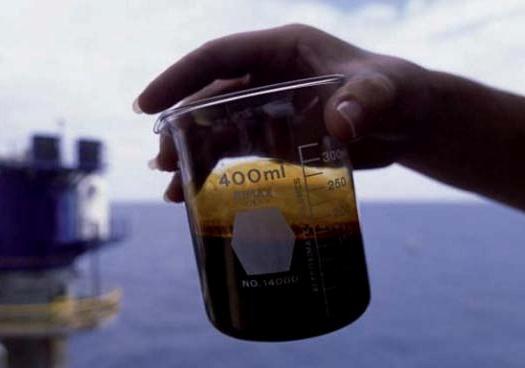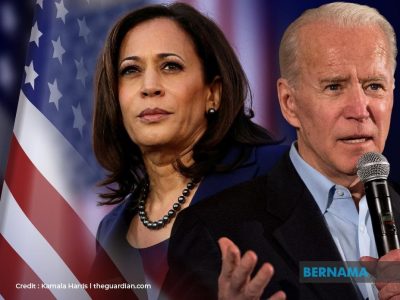The rally in oil prices sparked by several mentions of possible production cuts by Opec (Organisation of Petroleum Exporting Countries)-related ministers may not be sustainable until full cooperation is obtained from Opec and non-Opec members.
“Oil price volatility is here to stay until we see committed and concerted efforts by both Opec and non-Opec members to cut production in the oil rebalancing market,’’ said independent economist Lee Heng Guie.
There have been various reports on overtures made by the more desperate non-Opec members to cut production and conflicting reports of an accord between Russia and Opec members on the similar issue. Even the CEO of Russian oil giant Rosneft, Igor Sechin, had recently changed his tone, that he could possibly be open to output cuts. But most of the time, these reports were denied or not followed through and oil price sank back to their doldrums as the world is said to be drowning in oversupply.
Market players point out that there is too much distrust between de facto Opec leader and top oil exporter Saudi Arabia and No. 1 producer Russia, which had agreed to cuts in the past, but had only enacted very small ones in reality, said CNBC. The view is that Saudi Arabia will not be content until it has inflicted enough pain on its competitors, particularly US drillers.
At this stage, Russian producers are technically unable to reduce production right now because temperatures are so cold, said CNBC. Market players also believe technological innovation in the American oil patch has broken the established order in crude markets.While some see these reports on potential production cuts to be speculative, others believe that it is inevitable that major oil producers will have to meet.
“It’s an eventuality (that they will get together and talk on possible production cuts) if oil prices continue to fall.’’ said Vincent Khoo, head of research, UOBKayhian. In the short term, oil price is expected to be range bound between US$30 and US$40 per barrel unless total agreement on production cut is obtained from every major producer, said Danny Wong, CEO, Areca Capital.
“This is an opportunity to bottom fish before things improve in the second half. We have not seen oil prices at such low levels for a long time; like Warren Buffet’s investment style, we can consider accumulating oil-related stocks when most have lost hope,’’ said Wong.
 Was the December US interest rate hike a mistake? Further rate hikes seem to be on hold as falling world stock markets and slowing economic growth prompt a relook at other tools that the US central bank may employ. In her testimony last week, Fed chair Janet Yellen told lawmakers she was studying ways to “be prepared” should falling world stock markets, concern about financial sector stress, and slowing economic growth translate into a recession or another financial crisis. Despite the possibility that US rate hikes may be on hold, emerging markets have little to cheer about.
Was the December US interest rate hike a mistake? Further rate hikes seem to be on hold as falling world stock markets and slowing economic growth prompt a relook at other tools that the US central bank may employ. In her testimony last week, Fed chair Janet Yellen told lawmakers she was studying ways to “be prepared” should falling world stock markets, concern about financial sector stress, and slowing economic growth translate into a recession or another financial crisis. Despite the possibility that US rate hikes may be on hold, emerging markets have little to cheer about.
“Yellen’s words of caution underlies the vulnerability of the global and US economy to continued financial volatility. Emerging markets are highly susceptible to external headwinds including event and policy risks in China, given the uncertainty over the yuan exchange rate policy,’’ said Lee. “At present, the focus is on oil price and China which may prompt investors to seek safe haven assets. It may take some time for the dust to settle before funds return to emerging markets,’’ said Wong.
Will the Fed have to abandon its interest rate normalisation path? “Yellen’s wait-and-see approach means that a March increase in interest rates is now off the agenda, but the Fed will require more evidence before abandoning its strategy of cautious tightening. With the spectre of 2008 looming larger, that evidence may not be long in coming,’’ wrote Larry Elliot in The Guardian. “She has lost quite a lot of credibility in the US Senate hearing,’’ said Pong who had held the view that patches of weak data in the US economy indicated a more cautious approach to raising rates.
Banking stocks in Europe and the US have come under a lot of pressure lately. China, emerging markets, the eurozone, oil and commodities are the five fears stalking the banking industry, said The Guardian.
In China, huge private debt, unfinished property and infrastructure projects and a stockmarket dominated by individual investors are among some of the concerns. Among emerging markets, Brazil is in recession; Nigeria, Russia and the Middle Eastern oil producers are badly hit by falling prices; heavy debtors Turkey, South Africa and Mexico are braced for corporate insolvencies in the wake of future US rate hikes; Malaysia, Thailand and South Korea, which depend on trade with China’s manufacturing sector, are facing a slowdown.
The European Central Bank has cut its ultra low main interest rate. While stock markets have welcomed cheaper borrowing costs, fears that European banks have returned to their bad old ways and become embroiled in risky lending has come to dominate discussions in the City, said The Guardian.
The debts in the oil industry are mind-blowing. The exposure to the oil sector of US and European banks amounts to about US$250bil although big losses on that money are unlikely, said The Guardian, quoting JP Morgan. The oil industry had US$455bil of bonds outstanding in 2006, but that figure increased to US$1.4 trillion by 2014, according to the Bank for International Settlements.
Oil companies had US$1.6 trillion of syndicated loans in 2014, although that does not take into account repayments or loans that were never drawn. Now that oil prices have tumbled, those debts look increasingly unsustainable, said The Guardian. In commodities, about US$2 trillion in bonds have been issued by mining companies since 2010, with many now rated as junk, said The Guardian, quoting Moody’s.
One of the hardest hit has been commodities giant Glencore, which has US$36bil of net debt and a market value of US$20bil. The financial sector’s exposure to Glencore could be as high as US$100bil, said The Guardian, quoting Bank of America. Glencore has insisted that it has plenty of financial room for manoeuvre if things get tight and it has since moved to cut its debts.
Among other commodities, copper price has more than halved to below US$2 per lb since 2011. China’s slowdown means that copper, used in electrical wiring among other things, is not in such demand. The economy of some countries such as Zambia, are built almost entirely on copper. Low metal prices could force mining-dependent countries to default on their debts.
There have been at least 31 profit warnings posted by Singapore-listed companies since the start of the year. Out of that, roughly a third, or at least nine warnings, were from companies that are either in the offshore and marine (O&M) sector or serve the industry. These O&M firms are not likely to be the last to warn of poor earnings, said The Singapore Business Times, quoting analysts.
More O&M firms in Singapore could take writedowns in the coming months following substantial capital expenditure cuts by upstream players. Columnist Yap Leng Kuen sees the world swirling in spiral effects from major economic and financial developments.

Services
Stakeholder mapping, analysis, engagement and communication needs to be detailed to avoid business losses or even worse, a crisis. How can you do this effectively to prevent failure? ...
Data-driven business decisions have never been as crucial, especially in this era. MGBF leverages off, technology, experience and market presence to aid businesses in making accurate decisions. ...
MGBF provides comprehensive strategic advice and results-focused solutions to solve clients' problems in business-government relations so they can focus on their core business. ...
A critical business challenge is meeting the right decision-makers and potential buyers through the best channel and platform. How will you improve your business competency? ...
Upcoming Events
MGBF founding chairman Nordin Abdullah and UMW Toyota president Datuk Ravindran K. will delve into the convergence of automotive innovation and environmental sustainability in Penang, Sarawak, Johor and Pahang.
Hosted by menumiz™ – an end-to-end restaurant management system – this roundtable will feature a case study presentation and a panel session to discuss the latest digital trends, challenges, and opportunities within the food and beverage sector.
In this episode of 'A Working Lunch with Nordin', MGBF's founding chairman, Nordin Abdullah, will host this discussion focusing on the biggest threats and opportunities for businesses as we look to manage change in the South China Sea.
This MGBF Roundtable will focus on regional food security issues and trends in the regional supply chain, and trade regulations and policies, including a new geopolitical tool i.e., weaponisation of supply chains.
MGBF In The News

Planet QEOS, KIS BlOCNG San Bhd, and the Sarawak Land Consolidation and Rehabilitation Authority (SALCRA) have officially signed a tripartite memorandum of understanding (MoU) to establish a collaborative framework aimed at producing bio-hydrogen via the Steam Biomethane Reforming (SBMR) Process. The MoU was signed by Planet QEOS executive chairman Dino […]

Planet QEOS and China Machinery Engineering Corporation (CMEC) are interested in investing RM10 billion to co-develop advanced Megawatt peak (MWp) agrovoltaic in Baram, to further boost Sarawak’s green energy initiative and food security. Sarawak Premier Datuk Patinggi Tan Sri Abang Johari Tun Openg was briefed on Friday by both the […]

Last week SPM results came out, 373,974 aspirants who have been waiting patiently over the last few months would now know their fate. Some 10,109 have received all A’s, the golden standard of academic success and the ticket to those looking to study the “more advanced” subjects in university. Proudly, […]

The classic knee-jerk reaction is to say, fire the coach, change the leadership of associations, and reduce the funding till they start performing better. This kind of negative reinforcement may work for kindergarten children, but we are dealing with high-performance adults – individuals much further along in their psychological and […]

Since its earliest tea plantations in 1929, Cameron Highlands has grown to become a key player in the agricultural landscape of Malaysia, producing 40 per cent of all vegetables grown. Despite Malaysia shifting its economic focus away from agriculture, the industry remains imperative for food security and the livelihoods of […]

Although at first glance the travel industry and the agricultural sector appear to have nothing in common, they actually share more than meets the eye. The economic benefits of tourism to the agricultural sector can be multiplied several times over. “Tourism brings the end consumers closer to the source, which […]

The Malaysia Global Business Forum (MGBF) recently held a high-level roundtable themed ‘Designing the Future of the Digital Economy’, attended by industry leaders and business associations. The guest of honour was Yang Berhormat Syerleena Abdul Rashid, the Member of Parliament (MP) for Bukit Bendera in Penang. The MP’s Special Session […]

The Malaysia Global Business Forum (MGBF) will be hosting a roundtable on ‘Designing the Future of the Digital Economy’ on 23 February 2023. It is the culmination of the first three MGBF Exclusive Roundtable Series titled ‘The Evolving Threat Matrix in the Digital Economy’ held throughout 2022. According to the […]

The Founding Chairman of the Malaysia Global Business Forum (MGBF), Nordin Abdullah, today spoke on Bernama TV’s leading English talk show, The Brief, hosted by Jessy Chahal, on the topic of a stable political reality and what that means for the Malaysian economy. Nordin said, “The first thing that it […]

More than 1,100 years ago, Muhammad ibn Musa al-Khwarizmi was developing the mathematical formulas that we know today as algorithms which now have become so intertwined with the business fortunes of global media giants and the very fabric of geopolitics. A series of recent high level international reports have revealed […]

KSK Land has been recognised by the Malaysia Global Business Forum (MGBF) for its role in attracting high net-worth individuals to Malaysia post-pandemic. The first challenge in investor attraction is “selling” the country. In the context of Asia, Malaysia is competing with some very established investment destinations. The second […]

Malaysia, in particular Kuala Lumpur, continues to position itself as a regional centre to do business, educate a family and enjoy a global lifestyle. One company, KSK Land, has taken the lead in positioning itself and the city of Kuala Lumpur as a property investment destination for the global citizen […]

The upcoming budget represents an opportunity to build resilience in the critical sectors that will form the backbone of the country’s future-facing economic ambitions. This however needs to be achieved in the context of managing the community sectors most impacted by COVID-19 over the past two years. The Keluarga Malaysia (Malaysian Family) […]

Malaysia Global Business Forum (MGBF) has moved to support the creative economy as the overall economy moves into a recovery phase following the COVID19 pandemic. As a step in the direction of normalcy, the MGBF has agreed to host the art exhibition “I Know You’re Somewhere So Far” by one […]

Congratulations to Datuk Seri Ismail Sabri Yaakob for taking up the mantle of the ninth prime minister of Malaysia. There is nothing normal about the situation; it could not have been scripted but it has kept the spectrum of media, mainstream and social, gripped. The first order of business for […]

In a stirring speech to the nation, President Joseph R. Biden, Jr. stamped his brand of leadership on the presidency, in his first act as the 46th president of the United State of America, it signaled several shifts. Perhaps the weather was foreboding with snow falling before the ceremony that […]

KUALA LUMPUR, 6 July 2022 – As the global economy continues to deal with unprecedented levels of disruption caused by the pandemic and the conflict between Russia and Ukraine, the convergence of energy security and food security issues has become a front-of-mind issue faced by policy makers and consumers alike. […]

KUALA LUMPUR, 23 June 2022 — Malaysia Global Business Forum (MGBF) ties up with scoutAsia to ensure that businesses are equipped with deeper regional insights. The past two years has seen a massive shift in the way businesses are conducted with digitisation, digitalisation and automation continuously being adopted to improve […]

KUALA LUMPUR, 25 May 2022 – The Malaysia Global Business Forum (MGBF)’s exclusive roundtable on ‘Security Concerns in Critical Value Chains’ was held in a hybrid setting yesterday at the Eastin Hotel Kuala Lumpur. The guest of honour was Yang Berbahagia Tan Sri Dato’ Seri Rafidah Aziz, former minister of […]

 Was the December US interest rate hike a mistake? Further rate hikes seem to be on hold as falling world stock markets and slowing economic growth prompt a relook at other tools that the US central bank may employ. In her testimony last week, Fed chair Janet Yellen told lawmakers she was studying ways to “be prepared” should falling world stock markets, concern about financial sector stress, and slowing economic growth translate into a recession or another financial crisis. Despite the possibility that US rate hikes may be on hold, emerging markets have little to cheer about.
Was the December US interest rate hike a mistake? Further rate hikes seem to be on hold as falling world stock markets and slowing economic growth prompt a relook at other tools that the US central bank may employ. In her testimony last week, Fed chair Janet Yellen told lawmakers she was studying ways to “be prepared” should falling world stock markets, concern about financial sector stress, and slowing economic growth translate into a recession or another financial crisis. Despite the possibility that US rate hikes may be on hold, emerging markets have little to cheer about.


































